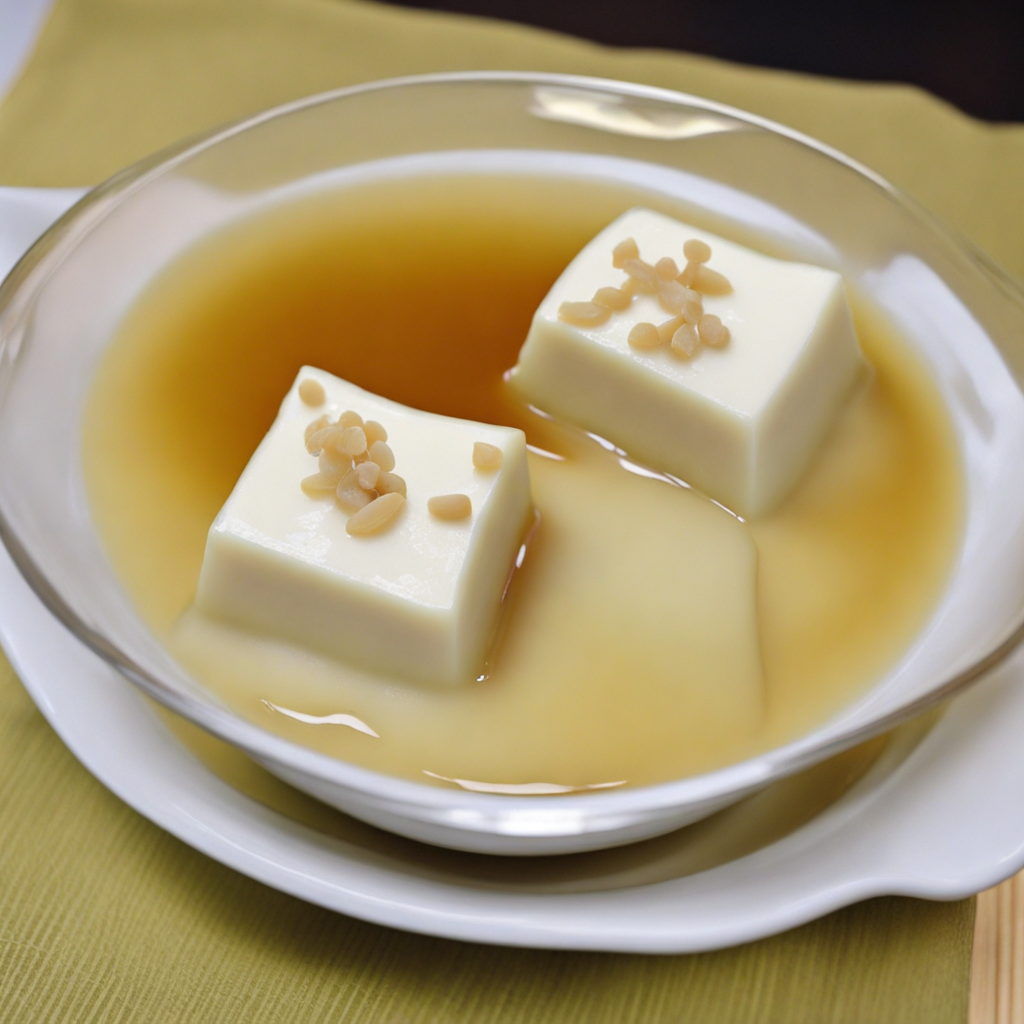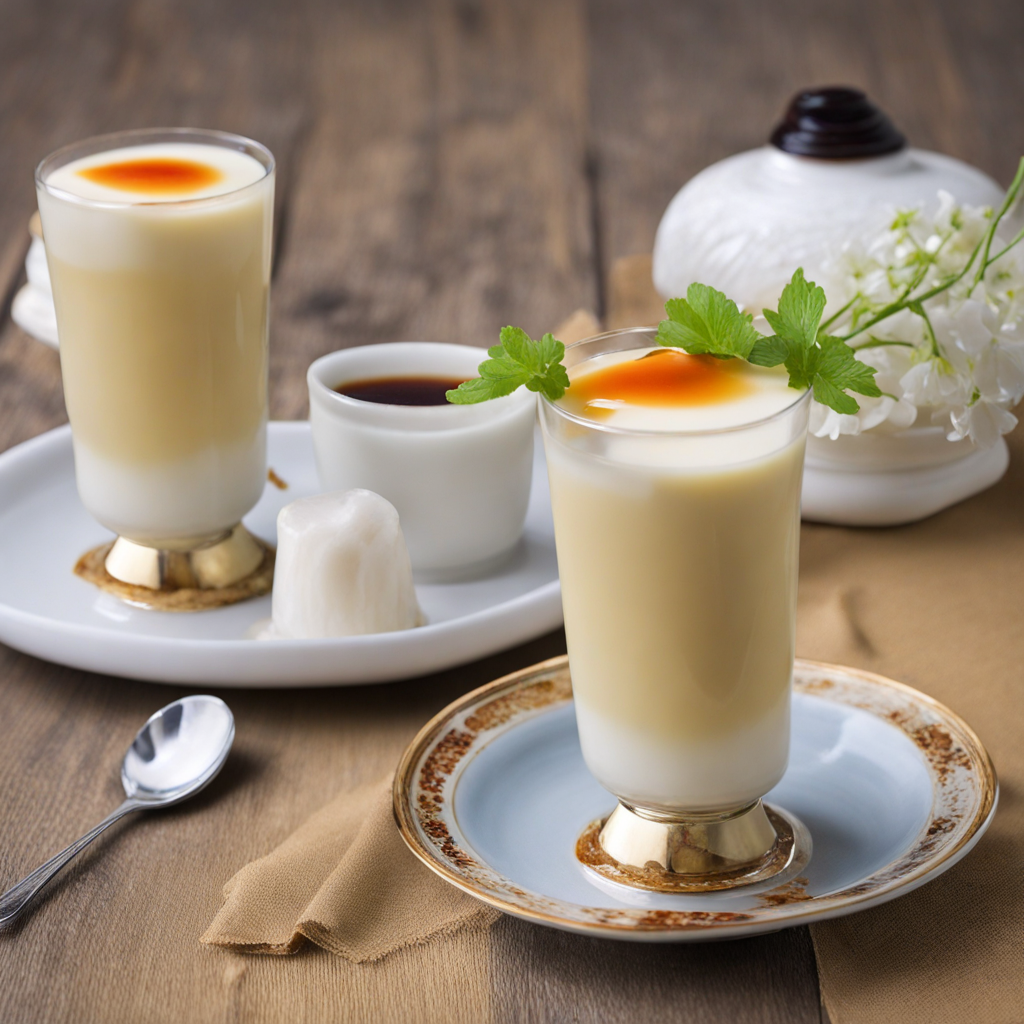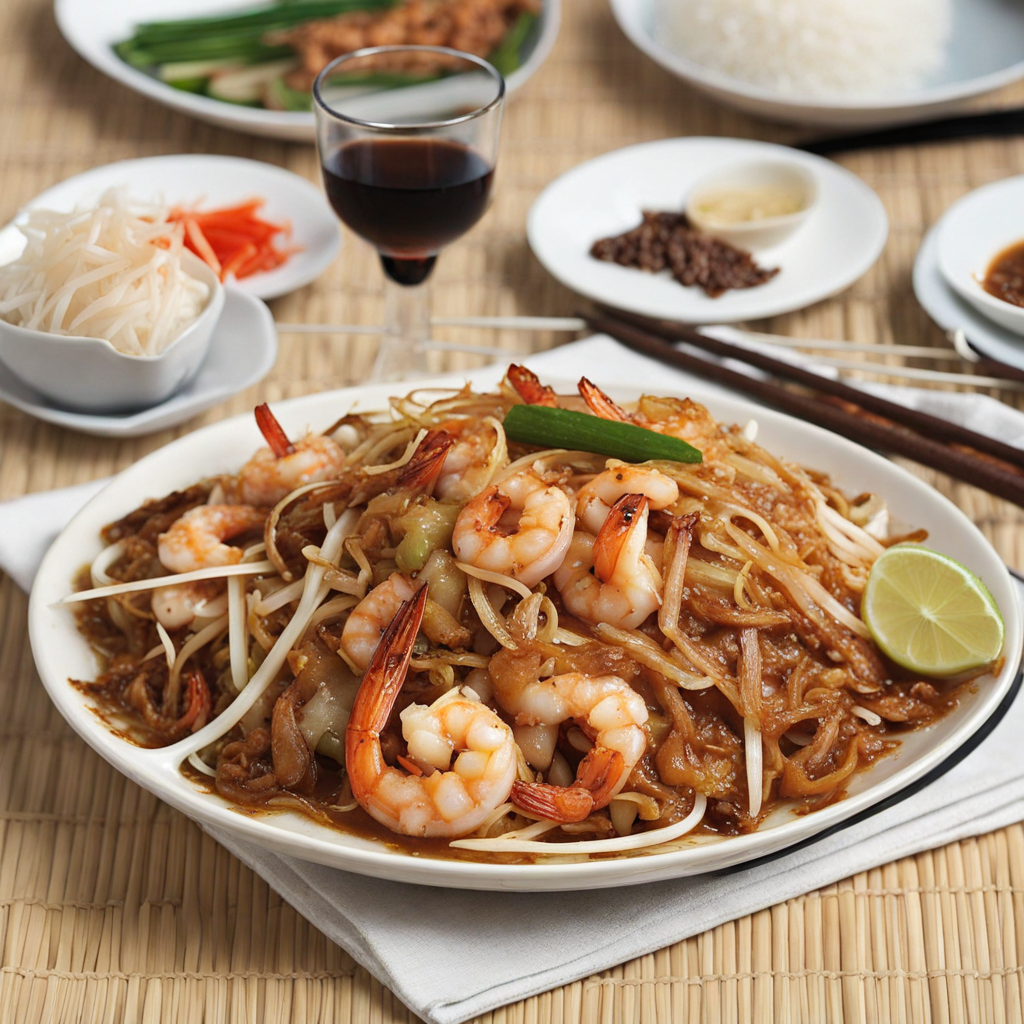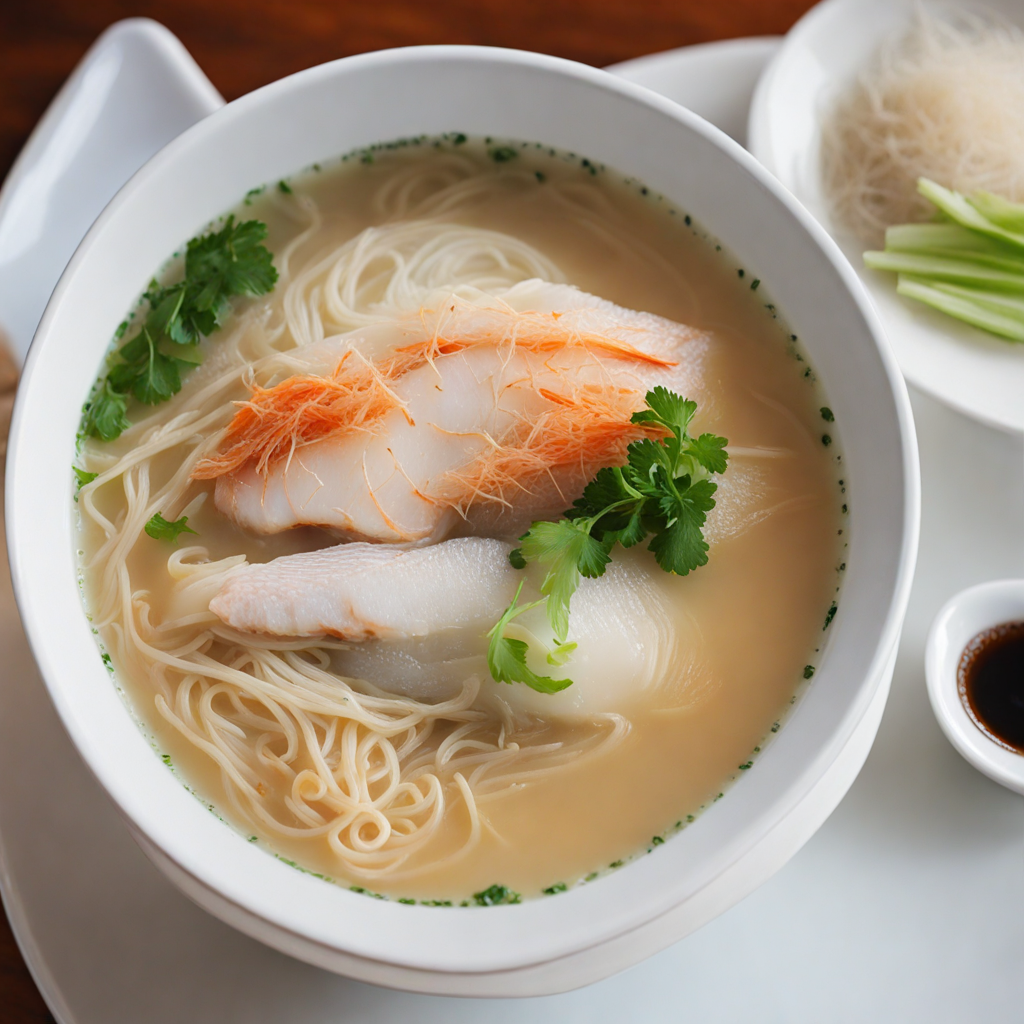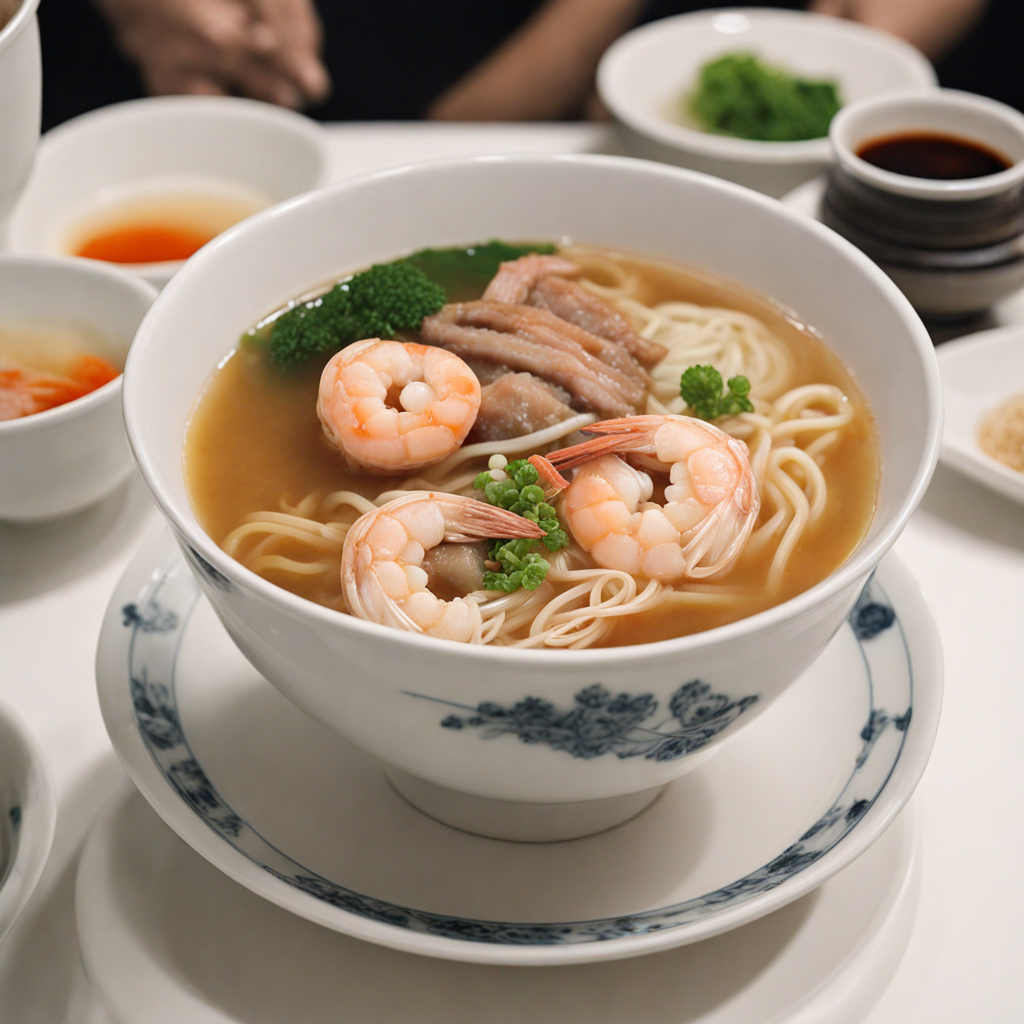Tau Huay
Tau Huay, also known as soybean pudding or tofu pudding, is a beloved dessert in Singapore that offers a delightful experience for the taste buds. This silky-smooth, delicate treat is made from freshly ground soybeans, water, and a coagulant, resulting in a soft and velvety texture that melts in your mouth. It is often served warm or chilled, making it a versatile dish suitable for any time of the day, whether for breakfast, a snack, or dessert. The simplicity of its ingredients allows the natural creaminess of the soybeans to shine through, providing a subtly sweet and slightly nutty flavor that is both comforting and satisfying. Traditionally, Tau Huay is enjoyed with a drizzle of sweet syrup, typically made from palm sugar or a light syrup infused with pandan leaves, which adds a fragrant note to the dish. The sweetness can be adjusted to personal preference, making it customizable for everyone’s taste. Some variations also include toppings such as crushed peanuts, red beans, or even a sprinkle of sesame seeds, which enhance the overall taste and introduce a delightful crunch that contrasts with the soft pudding. This balance of textures and flavors creates a harmonious dish that is both refreshing and indulgent. In Singapore, you can find Tau Huay at street stalls, hawker centers, and dessert shops, where it is often freshly made throughout the day. The experience of enjoying this dessert is not just about the taste; it's also about the cultural significance and the nostalgia it evokes for many locals. With its rich history and comforting nature, Tau Huay is a must-try for anyone looking to explore the sweet side of Singaporean cuisine, offering a deliciously unique taste that embodies the essence of the region's food culture.
How It Became This Dish
The Enigmatic Journey of 豆花 (Douhua) in Singapore: A Culinary Delight 豆花, pronounced as “douhua” in Mandarin, translates to “tofu flower” and is a delicate and silken soy-bean curd dessert that has earned a beloved place in the hearts of many across Asia, particularly in Singapore. Its journey is a tapestry woven with cultural exchanges, culinary innovations, and a deep-rooted connection to the people who savor it. Origins of Douhua The origins of douhua can be traced back to ancient China, with records indicating that it appeared as early as the Han Dynasty (206 BC – 220 AD). The production of soy products, including tofu, began thousands of years ago as a way to utilize soybeans, which were an abundant and nutritious crop. However, it wasn't until the Tang Dynasty (618 – 907 AD) that tofu became more widespread, and the soft, creamy texture of douhua began to emerge as a popular dish. Initially served as a savory dish, it was primarily consumed by the elite and then gradually made its way into the everyday diets of the common people. The process of making douhua involves coagulating soy milk with a coagulant, traditionally gypsum or magnesium chloride, which gives it its smooth and silky texture. This delicate dessert can be served in various ways, often accompanied by sweet syrup, toppings such as red beans, peanuts, or even fruits. The versatility of douhua has allowed it to evolve beyond its humble beginnings and become a favored dish across different regions of Asia. Douhua in Singapore: A Melting Pot of Cultures As Singapore developed into a melting pot of cultures, douhua found its way into the local food scene, thanks largely to the influx of Chinese immigrants in the 19th and early 20th centuries. These immigrant communities brought with them their culinary traditions, adapting them to local ingredients and tastes. The arrival of Hokkien and Cantonese immigrants particularly influenced the way douhua was prepared and served. In Singapore, douhua became popular as a street food item. Hawkers began selling it as a refreshing snack or dessert, often served chilled with a drizzling of sweet syrup and various toppings. The dish resonated with the local population, not just for its delightful taste but also for its affordability and accessibility. As a result, douhua became a staple in hawker centers, which are the heartbeat of Singapore’s culinary landscape. Cultural Significance The cultural significance of douhua in Singapore extends beyond its status as a popular dessert; it has become a symbol of comfort and nostalgia for many. For older generations, douhua evokes memories of childhood, of hawker stalls bustling with activity and the comforting presence of family. The dish is often associated with the simple joys of life, reminding people of shared moments spent over a bowl of this silky treat. Moreover, douhua also reflects Singapore’s multicultural ethos. While it has its roots in Chinese cuisine, it has been embraced by various ethnic communities, each adding their unique touch. For instance, in Malay and Indonesian contexts, douhua may be served with coconut milk or gula Melaka (palm sugar), infusing it with different flavors and textures. This adaptability signifies how food can bridge cultural divides, bringing people together and fostering a sense of community. Evolution and Modern Interpretation Over the decades, the preparation and presentation of douhua in Singapore have evolved significantly. Traditional recipes have been modernized, and new variations have emerged, reflecting the changing palate of Singaporeans. While classic douhua still holds its charm, contemporary versions have embraced innovation, incorporating ingredients like matcha, black sesame, and even fruit purees. In recent years, the rise of health-conscious eating has also impacted the way douhua is marketed and consumed. Many hawkers and dessert shops now offer healthier alternatives, such as soy milk made from organic soybeans or douhua sweetened with natural sweeteners instead of traditional syrup. This shift highlights a growing awareness of health and wellness among Singaporeans, while still honoring the roots of this cherished dish. Another interesting development has been the emergence of artisanal douhua. Small, specialized dessert shops have sprung up, focusing on the quality of ingredients and the craft of making douhua. These establishments often use non-GMO soybeans and employ traditional methods to create a richer flavor and smoother texture. Some even offer unique flavor infusions, elevating douhua to new culinary heights that appeal to both locals and tourists alike. Douhua as a Culinary Ambassador As Singapore continues to solidify its reputation as a global food capital, douhua has increasingly found its way onto international menus. Chefs and restaurateurs are recognizing the potential of this humble dessert, showcasing it at food festivals, pop-up events, and even fine dining establishments. This has not only introduced douhua to a wider audience but has also sparked interest in the broader spectrum of Asian desserts. As a culinary ambassador, douhua represents the fusion of tradition and modernity, a dish that honors its roots while embracing innovation. Its journey from humble street food to a dish celebrated in gourmet settings illustrates the dynamic evolution of food culture in a globalized world. Conclusion The journey of douhua in Singapore is a testament to the power of food as a connector of cultures and a reflector of societal changes. It has gracefully transitioned from an ancient Chinese delicacy to a beloved modern dessert, adapting to the tastes and preferences of each generation while retaining its essence. The cultural significance it holds in Singapore, as a symbol of nostalgia, community, and culinary innovation, ensures that douhua will continue to thrive for years to come. In a world where food is often seen merely as sustenance, douhua stands out as a reminder of the stories, traditions, and connections that each dish carries. As Singaporeans indulge in their bowls of douhua, they are not just enjoying a dessert; they are partaking in a rich history that celebrates the beauty of culinary diversity and the enduring spirit of cultural heritage.
You may like
Discover local flavors from Singapore


